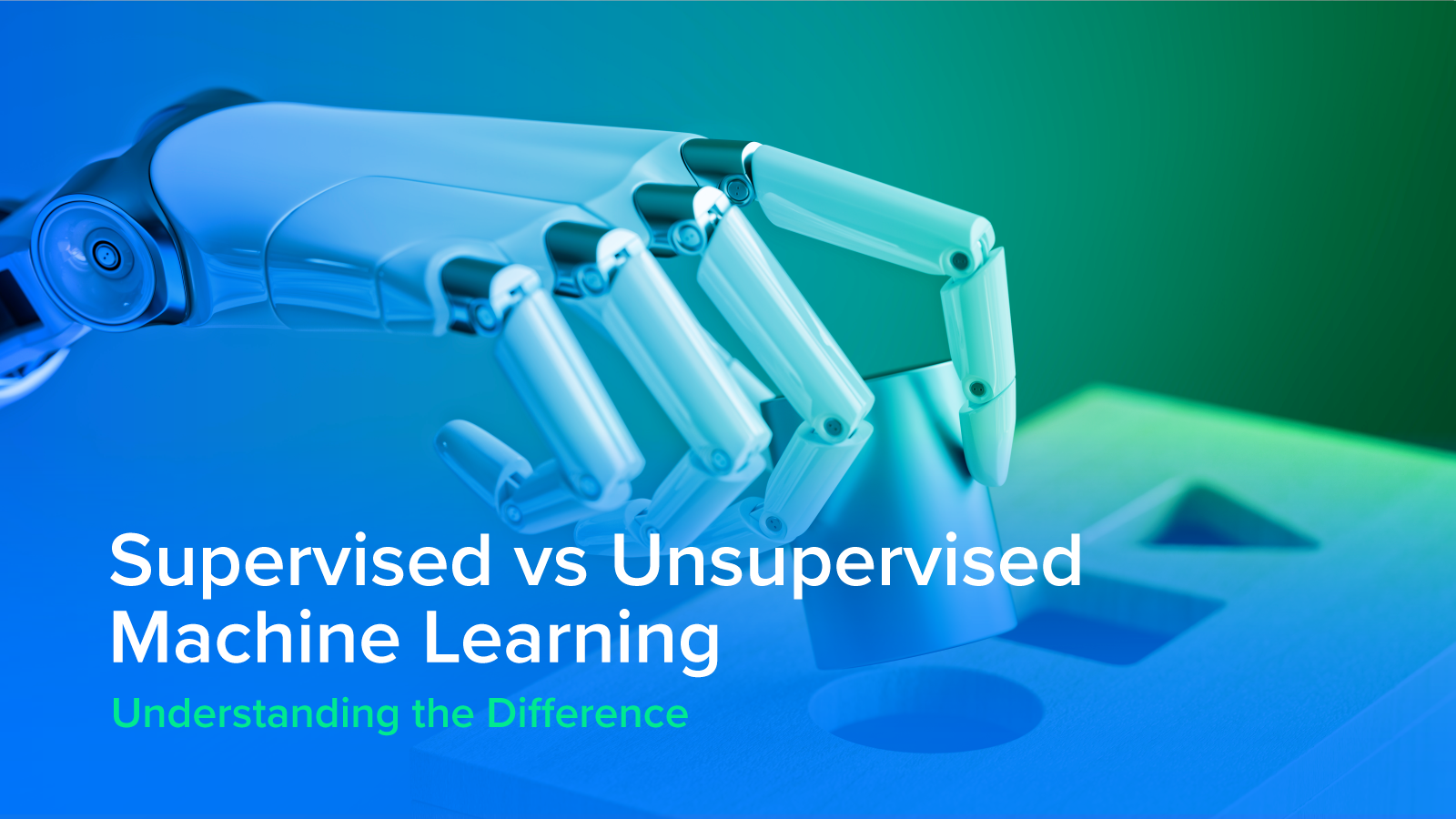Supervised vs Unsupervised Machine Learning
In this article, we will break down the differences with examples of both supervised and unsupervised learning for building better AI programs.
Join the DZone community and get the full member experience.
Join For FreeUnderstanding the Difference Between Supervised vs Unsupervised Machine Learning
Artificial intelligence (AI) is being used to change our lives every day. When it comes to building AI programs, there are two approaches programmers tend to choose: supervised or unsupervised machine learning.
The simple distinction between these is supervised machine learning utilizes labeled data to predict outcomes, while unsupervised machine learning does not.
There are, however, some differences between the two techniques, as well as critical areas where one surpasses the other. In this article, we will break down some of these differences with examples of both supervised and unsupervised learning.
What Is an Example of Supervised Learning?
Understanding the differences between supervised vs. unsupervised machine learning can be tricky, but we will try to sort it out starting with supervised learning.
We use what is called a “ground truth” in supervised learning, which means we know what the output values for our samples should be before we start. While at first, this may seem a little unnecessary, the purpose of supervised learning is to find a function that best approximates the relationship between input and output we expect and know to be true within a given sample set.
Think of it as having an instructor in the classroom who already knows the usage of a mathematical problem and the expected results from using a certain formula. A student learning to use this formula can then explore different ways to use that specific formula.
In the process, they may create similar results with totally different data sets. All the while the instructor is able to correct and guide where needed. This allows the AI program to learn to create expected results and outcomes with appropriate data rather than compile data and find as many unexpected results as possible.
Supervised learning can use this process to learn how to recognize the difference between your face and someone else’s face, for example. By inputting a picture(s) of your face it is able to learn and recognize when a face input into the system is, in fact, your face or the face of a stranger. This is how we have face recognition technology on smartphones and other smart devices.

What Is an Example of Unsupervised Learning?
Supervised learning has some practical uses, but that doesn’t mean unsupervised learning is out of the question. Unsupervised machine learning can perform three primary tasks: clustering, representation learning, and density estimation.
There are others, but these are by far the most common. In all three of these instances, we use unsupervised learning because we want to learn the data's inherent structure without requiring labels that are explicitly provided.
- Clustering is the process of grouping similar sets of data together.
- Representation learning is the process of detecting features and representations of features, typically in order to perform a task.
- Density estimation is a process utilizing statistical models for probability determination.
All three of these can be quite complex and unsupervised machine learning allows for AI programs to have more experimentation to come to conclusions. When choosing between supervised and unsupervised machine learning, this can be a deciding factor when building an AI program.
An example where unsupervised learning may be preferred is for a meteorologist to catalog observed data on specific conditions leading up to a certain weather event. Now, they may have their hypothesis that X conditions lead to Y weather events, but there is no way they could humanly qualify this hypothesis with the sheer amount of data to process to prove that hypothesis. However, with unsupervised learning, an AI program may be able to confirm or disprove that theory using clustering, representation learning, and density estimation processes.
Supervised and unsupervised machine learning both have their complexities, but unsupervised machine learning excels at working within complicated and messy problems to come to conclusions that may be relevant (and others that may not).
Exploring Differences Between Supervised and Unsupervised Machine Learning
When it comes down to it, both supervised and unsupervised learning have their place for creating practical and useful AI programs. The primary difference between supervised and unsupervised machine learning is the outcomes they are trying to achieve.
Supervised learning starts with a predefined set of results to work towards while unsupervised learning sorts that data and comes to relevant conclusions based on what it finds. Supervised learning is going to grant you the best results for simple processes, but the more complicated your desired outcome is the more supervised learning struggles. Unsupervised learning is going to be less reliable in getting outcomes you may want or need, but it is going to be more hands-off and allow you to input far more data sets.
Depending on what you are looking to use the data for, you may want to adjust your learning algorithm to get the best results.
How To Decide Which to Use: Supervised vs Unsupervised Machine Learning
To get started, you need to ask yourself what your desired result will be.
Are you hoping to simply understand and see connections between the data you have entered? Are you hoping to generate a specific result with your data? Are you hoping to create something to share with others with the program developed from this process?

Once you have answered a few of these questions you can begin to discern which may be a better learning process for your machine learning program. If you are wanting to create, for example, an AI program that can discern the difference between images of birds, then supervised learning will be best for a simple task.
However, if you have user-generated data about reviews of a product and want to find areas where you can improve, then unsupervised learning is going to be your best bet for such complicated data that can cluster results into easily digestible improvements you can make for your product.
When it comes to supervised vs unsupervised machine learning, if you have no idea which is going to be best for you, then your safest bet is to go with unsupervised learning.
It requires less interaction from you and, ultimately, allows the data to drive results. Beware, though, that the results may not be what you want or expect since unsupervised learning can be difficult to fine-tune.
Looking For More Information?
The world of AI and machine learning is constantly expanding and there will always be healthy debate on what is the better way to teach an algorithm: supervised vs unsupervised machine learning. In the end, though, it comes down to desired outcomes and preferences. There is rarely only one way to accomplish any task.
What do you think about our conclusions here? Did we overlook something you think we need to cover? We would love to hear your thoughts! If you have questions on supervised vs unsupervised learning, or any other topic on machine learning, feel free to contact us.
Published at DZone with permission of Kevin Vu. See the original article here.
Opinions expressed by DZone contributors are their own.


Comments